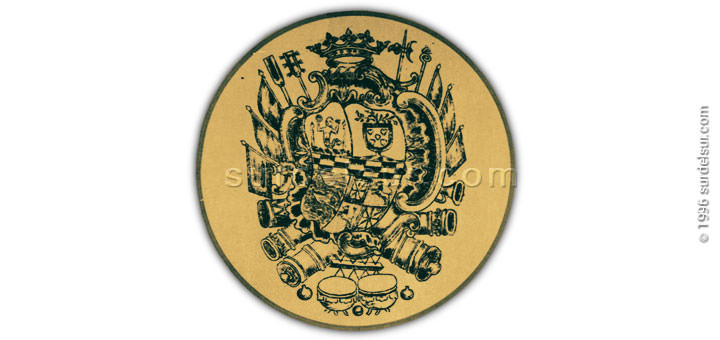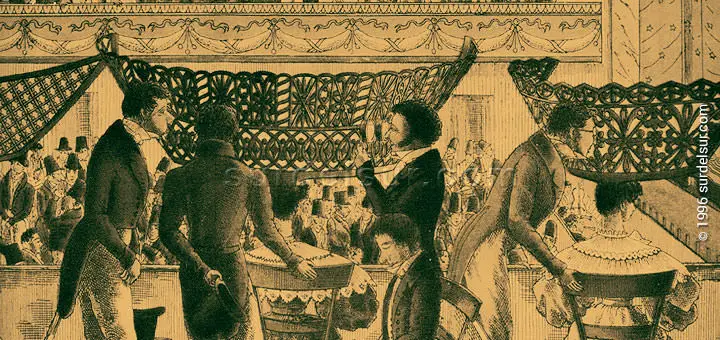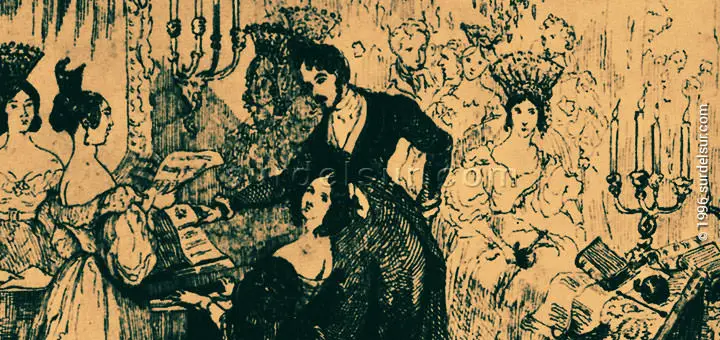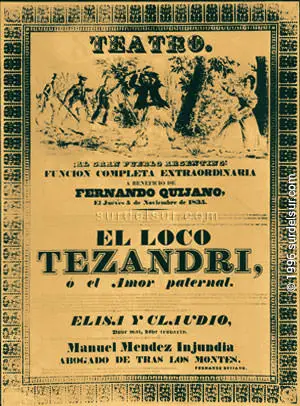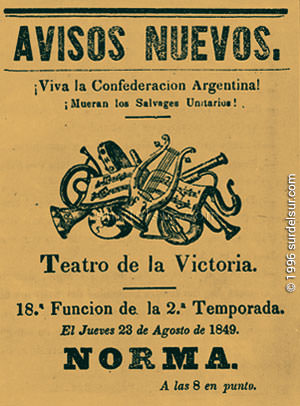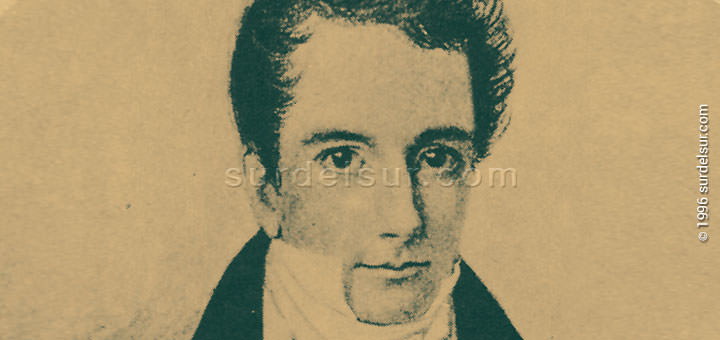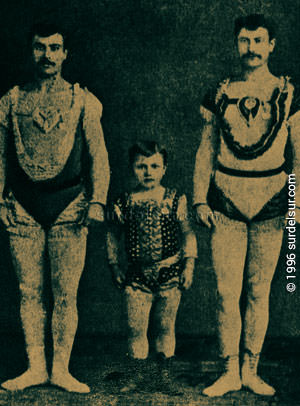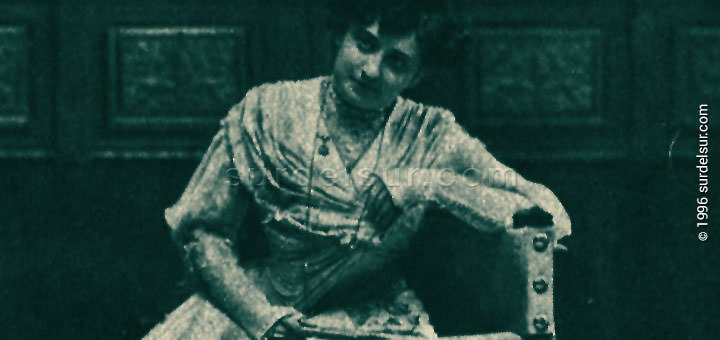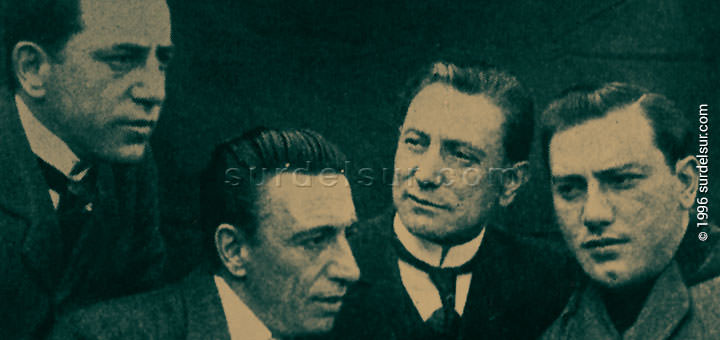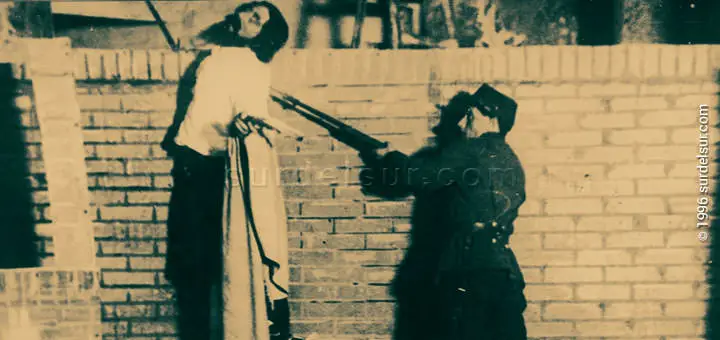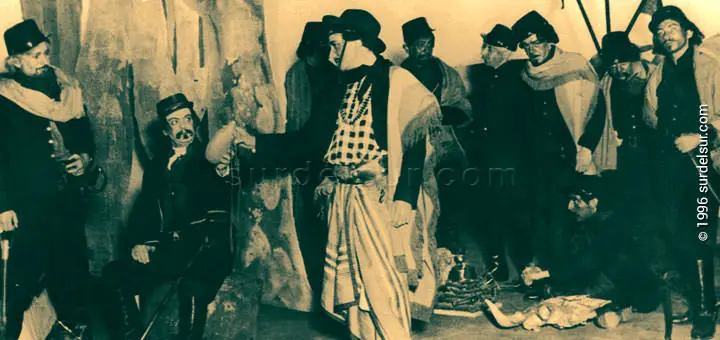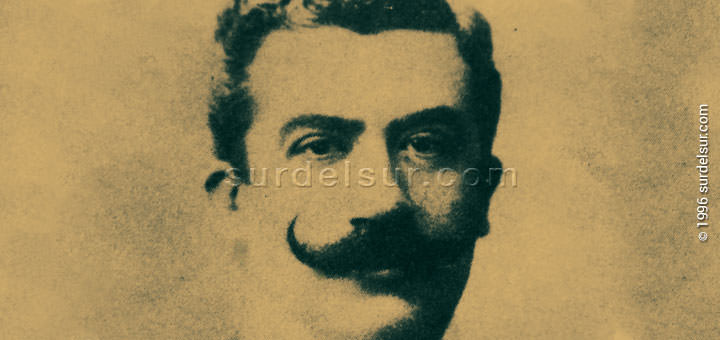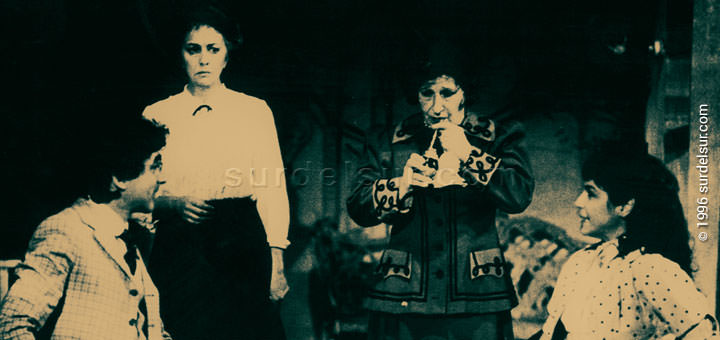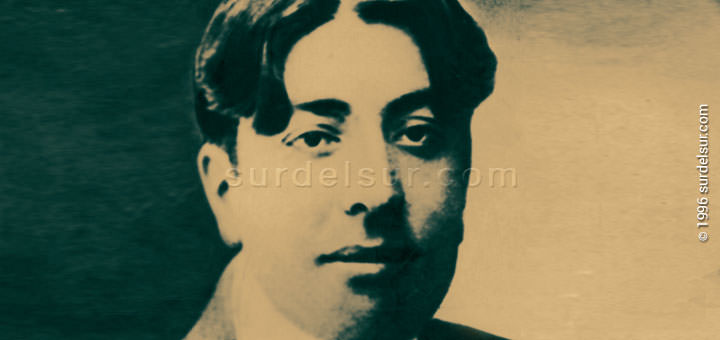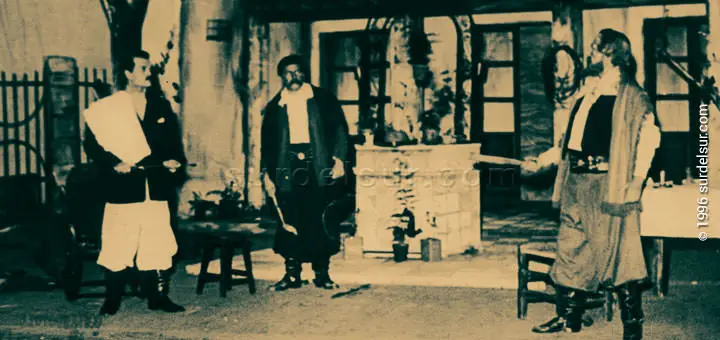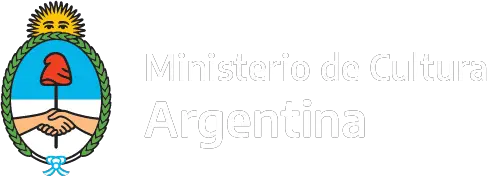In the Argentine theater history, different periods are described: Creating the first theatre, La Ranchería Theatre; El Coliseo Provisional; period, theater in times of Rosas; the theater of 1860-1880 and the Generation of ’80 covering the period of 1880-1910. To learn more about the history of theater from 1910 on, we suggest to see The Argentine theater since 1910
Article of the guest columnist, Osvaldo Calatayud for surdelsur.com
The Ranchería Theatre
In 1783 the first House of Comedy of the Argentine theater history was created; the promoter of this enterprise was the Viceroy of Lights, as Viceroy Vértiz was called. The La Ranchería Theater was burnt down in a fire in 1792. Three years before, Siripo, by Manuel José de Lavardén had been premiered there. It is regarded as the first play by a local playwright.
The Coliseo Provisional
Four years after the fire of La Ranchería, a new theater was inaugurated, the Coliseo Provisional, which in the Argentine theater history was considered the theater of the revolution, due perhaps to the closeness of the coming revolution of May, 1810. In that theater, El detalle de la acción de Maipú (The detail of the battle of Maipú) was premiered. The author of this play, which skillfully depicted popular customs, remains unknown.
In 1804 Viceroy Antonio Olaguer Feliú inaugurate a new theater, the Coliseo Provisional , in Cangallo and Reconquista, which then called the Teatro Argentino.
Later on, El hipócrita político (The Hypocritical Politician) was on stage, only the initial letters of its author being known: P.V.A.; it was an urban comedy, which reflected the Buenos Aires home of the period. In the same theater was premiered also, Túpac Amaru (or The revolution of Túpac Amaru), a tragedy written in verse which is an account of the Indian revolution which took place in 1780 in Tungasuka, Peru.
The traditional salon porteño of the colonial period, diminish its importance to the theaters arise, specific spaces for artistic activity.
Antonina Montes de Oca (1778-1834) was one of the first actresses of the Colosseum, acted as a young lady before 1810 and their daughter Dominga Montes de Oca performed from 6 , was a disciple of dances of the Cañete and Cato , and acted until 1833.
Trinidad Guevara is the interpreter that dominates the stage in the 1820s to 1830. In 1830 another star Juan Jose de los Santos Casacuberta appears. All of them, along with other figures of the time, come together on stage in 1832 offering the most brilliant show that until then had taken place in the Rio de la Plata, after which the theater activity turned in favor of the mimodramas, picaresque, cockfights and the circus.
Argentine Theater History at the Time of Rosas
The history of Argentine theater during the period 1829-1852, is characterized in that theatrical activity was influenced by political pressures, as testify the posters of the time. The theater became more popular, he excelled as a leisure activity for the rural masses and the suburbs.
Circus was the favorite spectacle of mazorquero federalism. The circus was developed under the influence of European and Latin American examples in this genre, especially those that included touring Argentina.
In 1827 the first amusement park was inaugurated, El Parque Argentino or Vauxhall (The Argentine Park) that occupied the space of the current Plaza Libertad, where he had various facilities including a circus space for 1500 spectators.
The park closed in 1838, when a new theater was opened, Victoria Theater , which attracts the Rosist society, foreign representations, the English sailors, French and American; and above all, where shines Manuelita Rosas .
The repertoire was foreign, predominantly Spanish drama and comedy. There were great players, but the proscription had not influenced authors that could exhibit their works during the twenty years of tyranny.
Among them, Juan Bautista Alberdi , writes from his exile in Uruguay, the petite piece El Gigante Amapolas (The Giant Poppies, 1842) satire on the caudillo Rosist regime; this time Alberdi first used elements of the absurd and the grotesque in dramatic Argentina.
Argentine theater 1860-1880
Only extreme circumstances, such as war or yellow fever, were temporarily decline theatrical activity. The growing foreign communities across the country, of which depended on the theatrical and artistic activity. So there was no show or novelty in Europe, which would not influence the life Argentina.
Several European companies visited the Rio de la Plata that continue and the City stages were considered artistic mecca for European shows.
The Generation of ’80
In 1884, Juan Moreira, a gauchesco drama, appeared in the form of a pantomime within the circus. This feuilleton by Eduardo Gutiérrez, which was published in a Buenos Aires newspaper, was the basis of the first play of gauchesco drama. The play was later completed by José Podestá, with texts drawn from the novel (1886). In April 10, 1886 the theatrical play was premiered. José Podestá interprets both melodrama and the subsequent stage version.
This cycle was closed in 1896, with the premiere of Calandri by Martiniano Leguizamón.
As from the early 20th century the theatrical activity was intense. Of the thirteen theaters in Buenos Aires, ten were occupied by foreign companies. Different companies premiered a large number of plays giving rise to the Golden Age of the Argentine Theatre History.
The presentation by the Podesta, June 16, 1902, La Piedra del Escándalo (The Stone of Scandal) by Martin Coronado (1850-1919) marks a turning point in Argentine theater history, criollo performers and authors, giving rise to the national Theatre.
They stood out in this period of Argentine theater history: Florencio Sanchez (1875-1910) author pragmatic, with successive approximations to reality, author of M’hijo el doctor (My son, the Doctor), Los Derechos de la Salud (Rights Health) and Barranca abajo (Downhill).
Gregorio de Laferrere (1867-1913) painter of types and customs, stood out with Jettatore, Locos de Verano (Crazy people in Summer) and Las de Barranco (The Barranco Women)
Roberto J. Payró (1867-1928) came from journalism and literary circles, which had as its center Ruben Dario, who was a friend. Payró gives rise to the theater of ideas trying to express the reality of Argentina. He was the author ofCanción Trágica (Tragic Song), released in the Apollo Theater in March 1902. Then followed Sobre las Ruinas (on the ruins), Marco Severi and El Casamiento de Laucha (Laucha’s wedding) book of 1906. They gave the theater activity, an unusual creativity.
References:
All graphic material in this report is edited digitally. The customized version by surdelsur.com shown on this page is performed based on the following documents:
- INET Instituto Nacional de Estudios de Teatro.[Photographs and ancient prints] kindly granted by the INET (National Institute for the Study of Theater)

